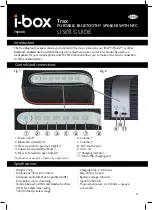
Configuring the internal baseband source
R&S
®
SMM100A
205
User Manual 1179.1341.02 ─ 05
Defining the Transition between the Segments
The R&S
SMM100A provides the parameter "Next Segment Mode" to define the transi-
tion to the subsequent segment (see the graphs in
).
●
Next Segment
: by receiving a Next Segment Event, the ARB aborts immediately
the playing of the current waveform and starts playing the next segment waveform
(see
).
●
Next Segment Seamless
: by receiving a Next Segment Event, the ARB com-
pletes the processing of the current waveform before starting the next segment
waveform (see
).
Use this setting to avoid signal gaps and wrap-around problems. Seamless transi-
tion requires segments with equal clock rates.
Another way to generate a multi-segment signal without signal gaps between the
segments is to use the provided ARB sequencer mode (see
"Multi-segment waveform sequencing"
shows two examples of the transition from a sine-wave signal segment
to a sawtooth segment (I channel, upper curve) in the case of next segment external
triggering. The left graphic displays an abrupt transition; the right graphic, the
seam-
less
transition case.
Table 4-14: Transition examples
Next Segment switching
Next Segment Seamless
Understanding the Trigger Examples
A simplified diagram in the ARB dialog is intended to explain the effect of the triggering
on the signal processing. The currently enabled settings for trigger and next segment
mode are considered.
The curves plotted in the dialog are textbook examples, "not measured" waveforms.
They are intended to visualize the trigger and the next segment settings more clearly.
Generating multi-segment waveform files
















































